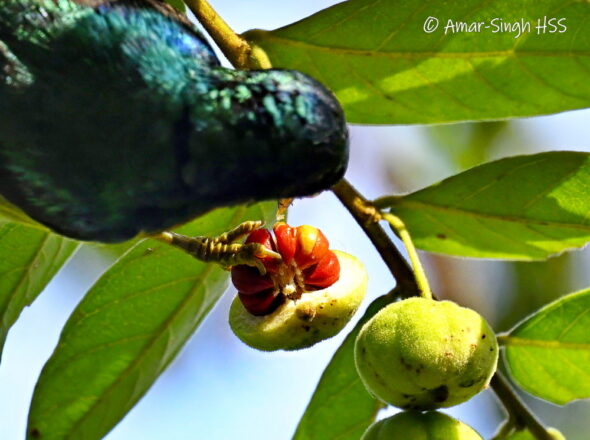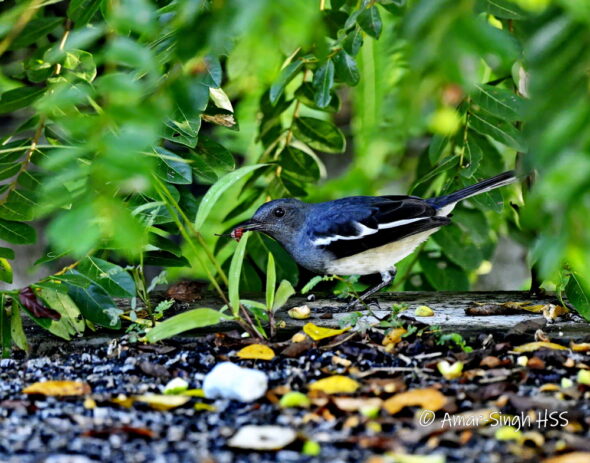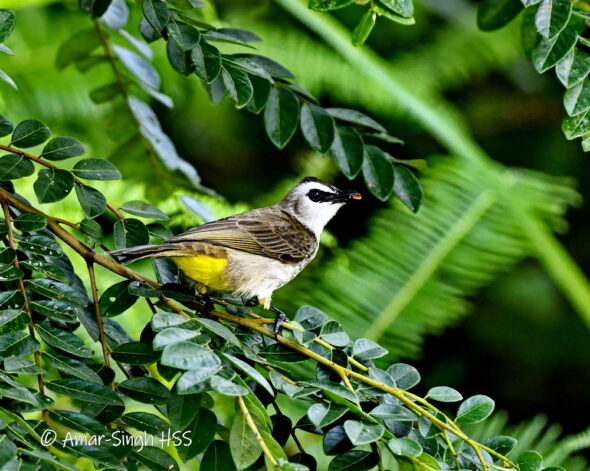I was watching a family of five Ruby-cheeked Sunbirds Chalcoparia singalensis on 3rd July 2023, at the Kledang-Saiong Forest Reserve, Ipoh, Perak, Malaysia, when I saw the adult male feeding on a new food item.
The adult was feeding on the Glochidion obscurum fruit. The Glochidion obscurum is a tree that can grow to 15 m tall. It has 0.1 cm long fruit which splits open when mature, revealing 12-14 ribbed capsules which contain seeds with red arils. The adult male stopped at a fruit that has a small opening and proceeded to open it further. The bird then fed on the red arils (see Image 1 and 2). The food item was not offered to the three juveniles that were largely self-feeding.


Much of the feeding of this family unit was in classical Ruby-cheeked Sunbird style of looking for invertebrates / insects by exploring or opening closed leaves (see Image 3) as well as looking under foliage.

In the past I have often observed Oriental Magpie-Robins Copsychus saularis (image 4) and Yellow-vented Bulbuls Pycnonotus goiavier (image 5) also feeding on the red arils of the Glochidion obscurum fruit. Oriental Magpie-Robins tend to feed on fallen arils.


It is interesting that none of these birds eat the outer fleshy fruit casing.
Reference:
Amar-Singh HSS. (2010) Feeding habits and behaviour of the Ruby-cheeked Sunbird Chalcoparia singalensis in Perak, Malaysia. BirdingASIA 14: 46–51









